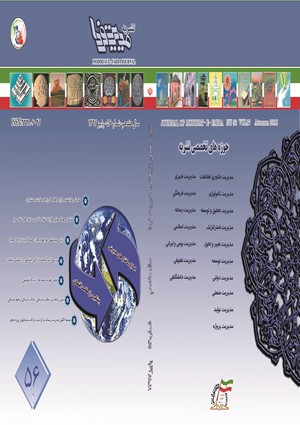Investigating the behavior of bank customers after the merger of branches with the development of a cluster analysis model; Case Study: Mellat Bank
Subject Areas :
1 -
Keywords: Banking, Merge of Branches, Customer Loss, Cluster Analysis.,
Abstract :
The emergence and expansion of new service channels in banks, the large number of branches in the service network of banks, and the high cost of the branch, on the one hand, led the banks to reduce the number of branches and the integration of smaller branches in other branches, but factors such as the loss of customers , Brand coverage, social security deprivation, etc., have created considerations for banks in integrating branches. In this paper, a comprehensive overview of the literature on mergers of bank branches and similar issues was first discussed and influential variables were identified in the problem. Then, the behavior of customers influenced by the merger of branches as one of the key variables affecting the problem has been investigated. For this purpose, a five-step model has been developed in this paper, with its main core of cluster analysis techniques. Finally, in order to demonstrate the effectiveness and applicability of the developed model, a case study of Mellat branches has been used in the country.
[1] Berger, Allen N., David B. Humphrey. 1994. “Bank Scale Economies, Mergers, Concentration, and Efficiency: The U.S. Experience.” University of Pennsylvania (Working Paper).
[2] Brechmann, Eike Christian, Claudia Czado, Peggy Ng. 2000. “Quantifying geographical and macroeconomic effects on bank branch deposits using linear mixed models.”
[3] Morrison, Philip S., Rachel O’Brien. 2001. “Bank branch closures in New Zealand: the application of a spatial interaction model.” Applied Geography 21 (4): 301-303.
[4] Huff, David L. 1964. “Defining and Estimating a Trading Area.” Journal of Marketing 28 (3): 34-38.
[5] Li, Chu-Fen. 2007. “Problems in Bank Branch Inefficiency: Management, Scale and Location.” Asian Journal of Management and Humanity Sciences 1: 523-538.
[6] Okeahalam, Charles. 2009. “Bank Branch Location: a Count Analysis.” Spatial Economic Analysis 4 (3): 275-300.
[7] Okeahalam, Charles. 2007. “Estimating market power in the South African banking sector.” International Review of Applied Economics 21: 669-685.
[8] Okeahalam, Charles. 2006. “Production efficiency in the South African banking sector: a stochastic analysis.” International Review of Applied Economics 20: 103-123.
[9] Ferreira, Fernando A. F., Ronald W. Spahr, Sérgio P. Santos, Paulo M. M. Rodrigues. 2010. “A multiple criteria framework to evaluate bank branch potential attractiveness.” CASEE 36.
[10] Capgemini Consulting. 2010. “The Future of Bank Branches Coordinating Physical with Digital.” The State of North American Digital Banking.
[11] French, Shaun, Andrew Leyshon, Sam Meek. 2013. “The Changing Geography of British Bank and Building.” University of Nottingham.
[12] Tabak, Benjamin M., Rogério Boueri Miranda, Dimas M. Fazio. 2013. “A geographically weighted approach to measuring efficiency in panel data: The case of US saving banks.” Journal of Banking & Finance 37: 3747-3756.
[13] Aigner, D., C. A. Lovell, P., Schmidt. 1977. “Formulation and estimation of stochastic frontier production function models.” Journal of Econometrics 6 (1): 21-37.
[14] Nguyen, Hoai-Luu Q. 2014. “Do Bank Branches Still Matter? The Effect of Closings on Local Economic Outcomes.”
[15] Başar, Ayfer, Özgür Kabak, Y. İlker Topçu. 2014. “Identifying the criteria and their priorities for locating bank branches in Turkey.” International Journal of the Analytic Hierarchy Process 1-5.
[16] Park, Yang Shin. 2014. Bank Merger Incentives and Market Competition: Two-sided Matching Model with Externalities. Boston University.
[17] Ruiz-Hernández, Diego, David Delgado Gómez, Joaquín López-Pascual. 2014. “Restructuring bank networks after mergers and acquisitions: A capacitated delocation model for closing and resizing branches.” Computers & Operations Research.
[18] American Bankers Association. 2012. “Rebooting the branch: Reinventing branch banking in a multichannel, global environment.”
[19] Martins, Tokunbo. 2014. “Guidelines on the establishment and rationalization of branches and other outlets for banks in Nigeria.” ABUJA: CENTRAL BANK OF NIGERIA.
[20] Accenture. 2008. “A Strategic Approach to Cost Reduction in Banking.”


